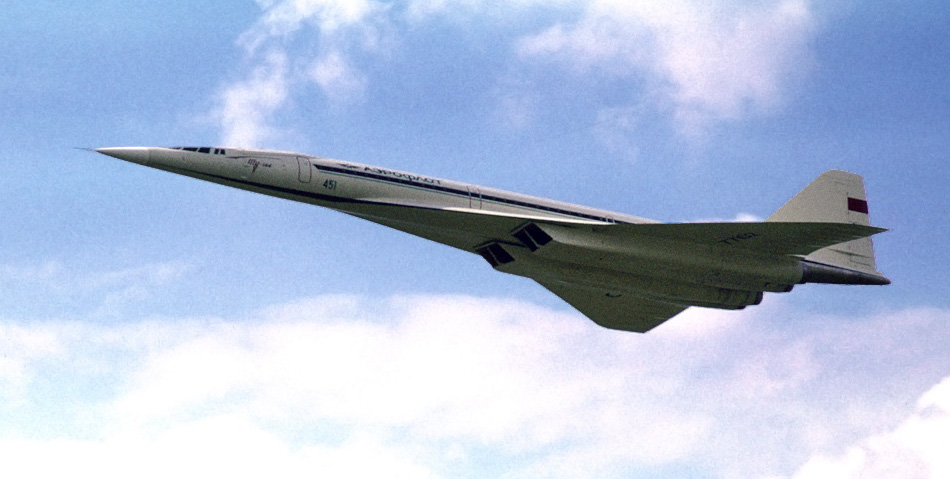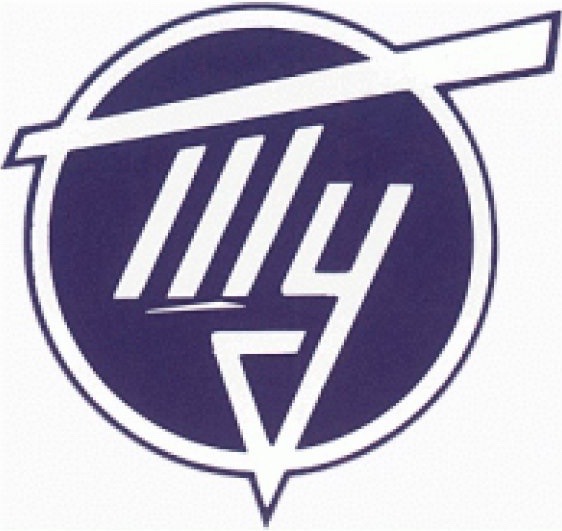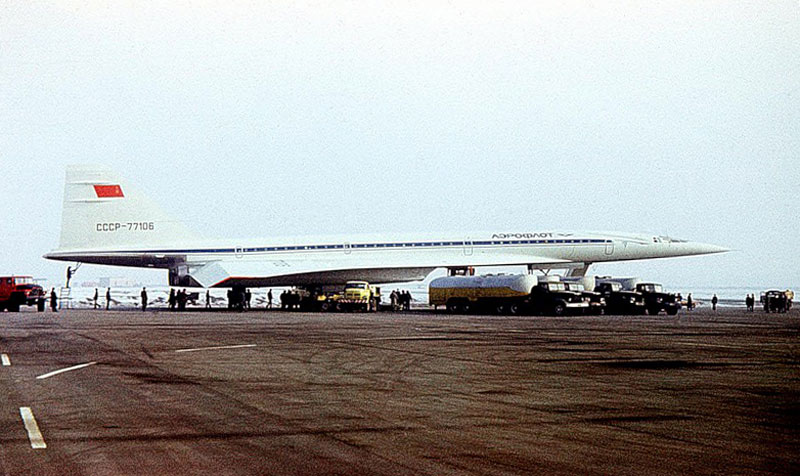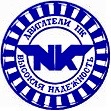

The Tu-144 was built by Tupolev OKB at the Voronezh Aviation Plant (VASO), Pridacha Airport, Voronezh. It was a large delta-winged aircraft with a “droop” nose for improved low speed cockpit visibility and retractable canards mounted high on the fuselage behind the cockpit. It was flown by a crew of 3 and was designed to carry up to 140 passengers.
77106 is 65.50 meters (215 feet, 6.6 inches) long, with a wingspan of 28.00 meters (91 feet, 10.4 inches). The tip of the vertical fin was 11.45 meters (37 feet, 6.8 inches) high. The 144S has a total wing are of 503 square meters (5,414 square feet). Its empty weight is 91,800 kilograms (202,384 pounds) and the maximum takeoff weight is 195,000 kilograms (429,901 pounds). (A number of Tu-144S airliners had extended wing tips, increasing the span to 28.80 meters (94 feet, 5.9 inches) and the wing area to 507 square meters (5,457 square feet).


The 144S has a cruise speed of Mach 2.07 (2,200 kilometers per hour/1,367 miles per hour) with a maximum speed of Mach 2.35 (2,500 kilometers per hour/1,553 miles per hour). The service ceiling is approximately 20,000 meters (65,617 feet). Its practical range is 3,080 kilometers (1,914 miles).
In actual commercial service, the Tu-144 was extremely unreliable. It was withdrawn from service after a total of just 102 commercial flights, including 55 passenger flights.
The cause of the accident is not known, other than the obvious structural failure, but there is speculation that the Tu-144 was trying to avoid another airplane.
© 2016, Bryan R. Swopes
The aircraft avoidance is just a legend, there is a more reliable history about changes on control command and retractable canard just before this flight to make it more manoeverable. This was made in reaction to Concorde demonstration and had side effect that lead to los of control .
” It was withdrawn from service after a total of just 102 commercial flights, including 55 passenger flights.”
That is a very poor return on investment for such an advanced aircraft.
A poor return on investment, indeed, if one measures success or motivation by that yardstick. For the Soviet Union, that is not what drove the development of the aircraft, in my opinion. By building and flying it, they could claim propaganda value by demonstrating the capability of Soviet science (espionage notwithstanding; The KGB penetrated the Concorde project early on and harvested a great deal of data which aided the Tu-144’s development). Had it been sufficiently reliable (and maybe with a little more range), there would have been some value and utility in VIP’s and others being able to cross the Soviet Union in half the time by air than they would otherwise have needed, when they needed to. As it was, it didn’t pan out.
“…and harvested a great deal of data …”
I was a comm-computer officer in the USAF. I remember many years ago being briefed on Soviet efforts to obtain info in the computer arena. One example was an IBM commercial computer circuit board they obtained to study and subsequently copied. We later “obtained” a copy of their board to study. They had copied the IBM board so exactly that they incorporated an error in the US board (which IBM later discovered and fixed) into their version.
It’s worth noting that later, NASA used a Tu144 for high speed flight research, at a time when there was collaboration between the USA and Russia, in the Joint Commission on Economic and Technological Cooperation. Twenty seven successful research flights were completed before the project was terminated.
Blatant copy of Concorde without the expertise. I remember the British press labelling it ´Concordski’!!